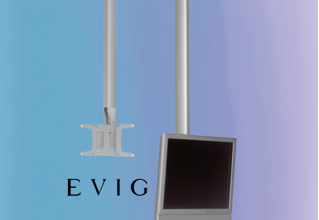AI Voiceover Technology and Its Role in Accessibility

AI voiceover technology has significantly evolved, serving as a vital tool for enhancing accessibility. Its ability to convert text into speech caters to individuals with disabilities, particularly those with visual impairments or reading challenges. This technological advancement not only facilitates access to information but also fosters independence through intuitive interaction. As industries increasingly adopt these solutions, questions arise about the broader implications for inclusivity and the potential for further innovation in this field.
The Evolution of AI Voiceover Technology
Over the past decade, advancements in AI voiceover technology have transformed the landscape of audio production and accessibility.
Historical advancements and technical innovations have enabled more natural-sounding voices, allowing creators to produce high-quality content efficiently.
These developments empower diverse voices to be heard, ensuring that freedom of expression is preserved while broadening the horizons of audio engagement for creators and audiences alike.
See also: How Laboratories Provide Crucial Insights for Accurate Diagnosis
Enhancing Accessibility for Individuals With Disabilities
As AI voiceover technology continues to evolve, it plays a crucial role in enhancing accessibility for individuals with disabilities.
Text to Speech systems empower users by converting written content into audible speech, facilitating information access.
Meanwhile, Speech Recognition technologies enable users to interact effortlessly with devices, breaking down communication barriers.
Together, these advancements foster independence and inclusion, allowing individuals with disabilities to navigate the world more freely.
Applications of AI Voiceovers Across Various Industries
While AI voiceover technology is often associated with accessibility initiatives, its applications span a multitude of industries, revolutionizing the way businesses communicate and engage with their audiences.
In advertising campaigns, AI voiceovers enhance brand storytelling, while in customer service, they provide efficient, personalized interactions.
This technology not only streamlines processes but also fosters deeper connections, empowering organizations to reach and resonate with diverse audiences.
The Future of AI Voiceover Technology in Promoting Inclusivity
AI voiceover technology holds significant potential for enhancing inclusivity in various sectors, building on its existing applications in advertising and customer service.
With AI advancements, voiceovers can be personalized to cater to diverse needs, improving user experience across platforms.
As this technology evolves, it is poised to break down barriers, ensuring information accessibility and fostering a more inclusive environment for all individuals.
Conclusion
In conclusion, AI voiceover technology has undeniably transformed accessibility for individuals with disabilities, fostering a more inclusive society. The theory that technology can bridge communication gaps holds true, as advancements in Text-to-Speech and speech recognition systems have empowered users to engage with information and devices effortlessly. As industries continue to adopt these innovations, the potential for AI voiceovers to dismantle barriers and enhance quality of life for all individuals remains a compelling narrative in the evolution of accessibility.




